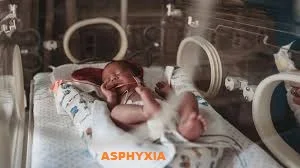FIRST
AID IN
EMERGENCIES
A.
ASPHYXIA
, DROWING , SHOCK :-
1.
ASPHYXIA
:-
Definition :- Asphyxia
or asphyxiation ( from ancient –“
without” and asphyxias , “squeeze “ (throb
of heart ) is a condition of severely
deficient supply of oxygen to the body
that a arises from abnormal breathing .
*An example of asphyxia is chocking . Asphyxia
causes generalized hypoxia , which affects primarily the tissues and organs . There are many
circumstances that can induce asphyxia ,
all of which are characterized by an inability of an individual to acquire
sufficient oxygen through breathing for an extended for period of time .
Asphyxia can cause coma or death .
Cause :-
* situations that can cause asphyxia include but are not limited to the constriction or abstraction of airways.
* Such as from asthma , laryngospasm , or simple blockage from the presence of foreign materials.
* From being in
environments Where oxygen is not readily accessible .
*.Such as underwater ,In a low oxygen atmosphere ,or in a vacuum.
*
Environment where
sufficiently oxygenated breathed
because of air contamination such as excessive , smoke .
There
cause of oxygen deficiency include but are not limited
to:-
*Acute respiratory distress syndrome
* carbon
monoxide inhalation , such as that from a car exhaust and the smoke ‘s emission from a lighted cigarette; carbon
monoxide has higher affinity they oxygen to the hemoglobin in the blood’s
red blood corpuscles, bonding with it
tenaciously and in the process ,
displacing oxygen and preventing the blood from transporting oxygen around the
body .
*
Contact with certain chemicals , includes pulmonary agents ( such as hydrogen
cyanide).
* Drowning
* Drug overdose .
* Exposure to extreme low pressure or vacuum to the pattern , hanging specifically suspension or short drop hanging
* Self – induced
hypocapnia by hyperventilation , as in shallow
water or deep blackout and the
choking game
*
control alveolar hypo ventilation
syndrome , or primary alveolar hypoventilation ,a disorder of the automatic
nervous system in which a patient must
consciously breath ; although it is often said that person with this disease
will die if they fall asleep , this is
not usually the case.
* Respiratory distress
* sleep apnea
* strangling
* A seizure which stops breathing
activity
Treatment;-
* Asphyxia
implies an inadequate delivery of oxygen
to the brain .this low oxygen level may be detected with blood gas tests on either the baby’s
blood or that of the umbilical cord , Also
, when the blood has been low in
oxygen for some time , it begins to show other abnormal
signs.
* For
example , the blood will become acidic which can also be detected
with blood tests.
*The
effect of asphyxia generally depends on how long the baby has not had enough
oxygen.
*
Treatment for asphyxia consists
of strategies to improve oxygen
delivery within the body
*
usually this means delivering oxygen rather than air to the baby . often
with mechanical ventilation * Additionally , blood
circulation is monitored and when necessary , improved by giving extra fluids ,
blood or drugs to support heart function
and blood pressure .
* A
balance must be maintained . If blood
pressure is too high , there is a risk of bleeding in the brain
*
If severe , asphyxia will also affect will be monitored with
special attention to the kidneys , liver
and heart .
* Asphyxia is most commonly seen in the newborn baby immediately following birth and it is generally only severe cases that will cause death or song term disability .







0 Comments